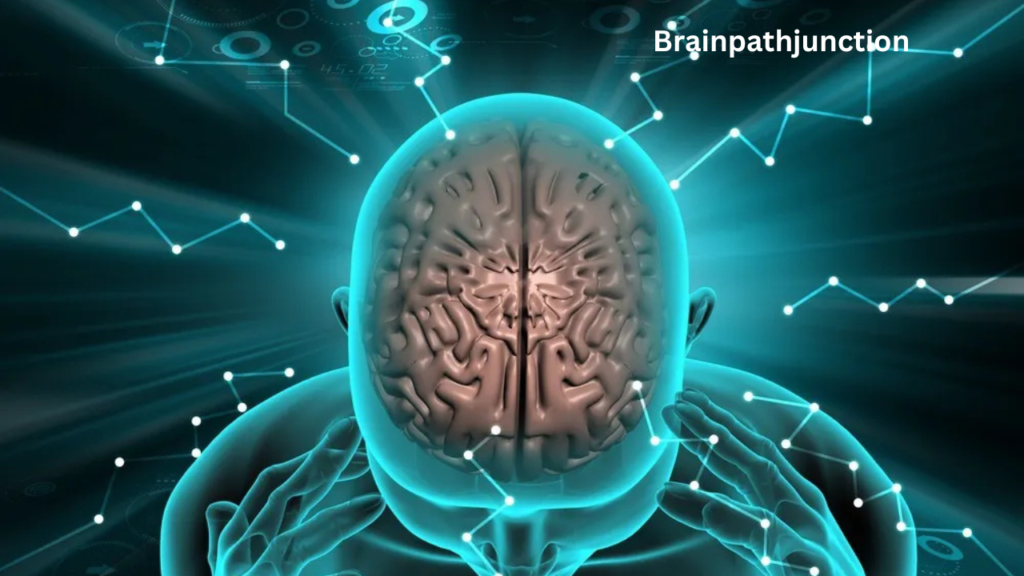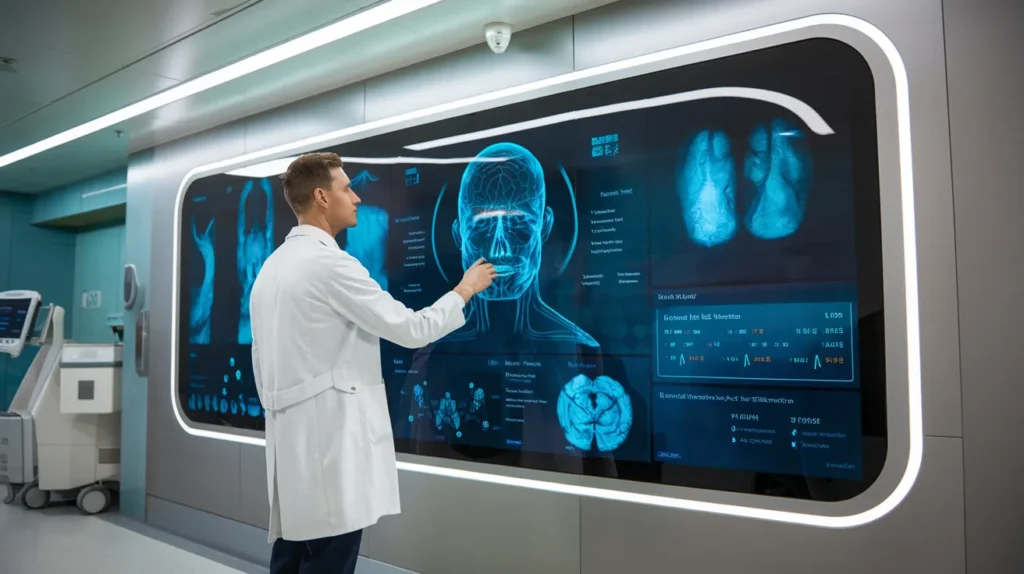Brainpathjunction The New Frontier of Neurotechnology and

In the realm of neuroscience, rapid advancements continue to push the boundaries of human understanding of the brain and its functions. One of the latest, most promising developments in this field is Brain path junction, a term that has begun to gain traction among scientists, technologists, and bioengineers. This innovation is at the cutting edge of neurotechnology and aims to revolutionize our approach to cognitive enhancement, brain-computer interfaces (BCIs), and the treatment of neurological disorders.
In this comprehensive guide, we’ll dive deep into Brainpathjunction, exploring what it is, how it works, its applications, benefits, and potential ethical concerns. As a unique and groundbreaking concept, Brain path junction could very well be the key to unlocking new dimensions of human potential.
What is Brainpathjunction?
At its core, It refers to the point of intersection between neural pathways within the brain that are modified or enhanced using advanced neurotechnologies. These pathways—responsible for everything from motor control and sensory perception to complex decision-making and emotional processing—are intricate networks of neurons that communicate through electrical impulses. Brainpathjunction represents a new framework for accessing, analyzing, and potentially rewiring these neural connections to improve brain function.
In simple terms, Brain path junction is a bridge between the human brain’s natural processes and artificial systems designed to enhance or repair them. This concept leverages cutting-edge technologies like AI-driven neural mapping, biofeedback, and direct brain-computer interface mechanisms to optimize cognitive performance and treat neurological diseases.
The Science Behind Brainpathjunction
Understanding Brain path junction requires a grasp of how the brain’s neural networks operate. The human brain is made up of billions of neurons that send electrical signals to each other across synapses, forming neural pathways. These pathways are responsible for everything we do—thoughts, emotions, behaviors, and physical actions. The brain has an incredible capacity for plasticity, meaning it can change and adapt based on new experiences or external stimuli.
It utilizes this neural plasticity but enhances it through technological means. Using sophisticated algorithms, Brain path junction can identify key areas of the brain responsible for specific functions and then introduce bioengineered systems, such as nanochips or neuroprosthetics, to target and enhance these areas. For example, by reinforcing connections between neurons involved in memory retention, Brain path junction could potentially improve learning and cognitive recall.
Noninvasive methods of neurostimulation using techniques such as TMS and DBS have already provided the basis for Brain path hjunction. However, the leap forward in developing these approaches is the integration of these techniques with online data processing, artificial intelligence, and immediate biointerfaces for interfacing with the brain’s neurological circuits.
The Technology Behind Brainpathjunction
Several technological pillars support the Brain path junction concept:
Neuroimaging
Advanced imaging technologies such as functional magnetic resonance imaging (fMRI) and positron emission tomography (PET) scans allow scientists to map brain activity in real-time. These techniques are essential for identifying specific neural pathways and the “junctions” that can be enhanced or modified.
Brain-Computer Interfaces (BCIs)
BCIs form the backbone of Brain path junction technology. BCIs allow direct interaction between the brain and remote devices. By linking the human brain to a computer, Brainpathjunction can monitor neural activity and stimulate specific areas of the brain to improve cognitive function or restore lost abilities.
Neurofeedback Systems
Neurofeedback is a technique where individuals learn to control their brainwave patterns by receiving real-time feedback from their brain activity. In Brain path junction, neurofeedback is enhanced by AI algorithms that guide the brain toward optimal neural states, facilitating faster learning, emotional regulation, and enhanced problem-solving.
Nanotechnology and Neural Implants
Tiny bio-compatible implants, sometimes called neural nanochips, can be introduced at the junction points of critical brain pathways. These implants help create more robust neural networks, assist in neuroregeneration, and even enable new types of sensory input to be processed by the brain.

Artificial Intelligence (AI)
AI plays a crucial role in interpreting the vast amounts of data generated by the brain’s activity. Machine learning algorithms can analyze these patterns and suggest ways to modify or optimize neural pathways, essentially serving as the brain’s “co-pilot” in Brain path junction.
Applications of Brainpathjunction
The potential applications of Brain path junction are vast and transformative. Here are some key areas where this technology could make a significant impact:
1. Cognitive Enhancement
One of the primary goals of Brain path junction is to enhance human cognitive abilities. With the potential to improve memory, focus, creativity, and problem-solving skills, this technology offers a glimpse into the future of intelligence augmentation. Imagine students learning complex subjects in a fraction of the time, professionals improving their decision-making processes, or individuals enhancing their creativity through direct manipulation of brain pathways. Brainpathjunction can optimize the brain’s natural processes, making them more efficient and effective.
2. Neurorehabilitation and Therapy
It can revolutionize the treatment of neurological disorders such as Parkinson’s disease, epilepsy, Alzheimer’s, and even traumatic brain injuries. By targeting damaged neural pathways and re-establishing connections using neurostimulation and nanochips, this technology offers new hope for restoring lost functions and improving the quality of life for millions of patients.
Additionally, Brain path junction can be used in mental health treatments, particularly for conditions such as depression, anxiety, and PTSD. By reconfiguring the brain’s response to stress or trauma, individuals can experience relief from debilitating symptoms and achieve long-term recovery.
3. Human-Computer Interaction
It could pave the way for more seamless human-computer interaction, enabling individuals to control devices or access information with just their thoughts. By integrating BCIs with Brain path junction technology, users could potentially interact with complex systems, such as artificial intelligence, virtual reality environments, or even machinery, without needing physical input. This would have huge implications for fields like cybersecurity, gaming, defense, and even space exploration.
4. Educational and Training Systems
Incorporating Brain path junction into educational settings could radically transform how we learn. With the ability to accelerate neural pathways responsible for learning and memory retention, It could help students grasp difficult concepts at a much faster rate. This technology also holds promise in training simulations for high-pressure professions such as surgeons, pilots, or first responders, where speed and accuracy are crucial.
5. Sensory Augmentation and Virtual Reality
Another exciting application is the potential for sensory augmentation. By tapping into the brain’s pathways responsible for sensory processing, Brain path junction could enhance or modify sensory input. This could mean everything from improving vision or hearing beyond natural capabilities to experiencing entirely new types of sensory data. In the world of virtual reality, Brain path junction could create fully immersive experiences that engage the brain in unprecedented ways, blurring the lines between physical reality and virtual environments.
The Ethical Considerations of Brainpathjunction
As with any revolutionary technology, Brain path junction brings with it a host of ethical considerations that need to be carefully examined before widespread adoption. Here are a few key concerns:
1. Privacy and Data Security
Brain path junction technology involves the collection of vast amounts of brain activity data, which could be susceptible to misuse or hacking. Ensuring the security of this highly sensitive data is paramount, as unauthorized access could lead to a range of ethical dilemmas, including the possibility of manipulation or exploitation of individuals based on their brain patterns.
2. Cognitive Inequality
If Brainpathjunction becomes a reality, access to this technology could be limited by socio-economic factors. This raises the issue of cognitive inequality, where only the wealthy or privileged could afford brain enhancements, leading to a divide between those with augmented cognitive abilities and those without. Governments and regulatory bodies will need to address how to ensure fair access to such transformative technologies.
3. Loss of Autonomy
One of the fundamental concerns with Brain path junction is the risk of individuals losing autonomy over their thoughts and actions. If artificial systems are capable of modifying neural pathways, where do we draw the line between enhancement and control? How much should technology be allowed to interfere with the natural functioning of the human brain?
4. Unintended Consequences
On the same note, there is a lot that Brain path junction brings to the table, but we have no way of determining the amount of resilience that such interventions will create in the long run. Rewiring of the connections in the brain can lead to other side effects, which can include a shifting of personality or emotional stability or even long term brain functionality. In the future, there is going to be a need to do the proper testing concerning the efficiency and safety of this invention, as well as relevant regulation.
Conclusion
While Brain path junction is still in the experimental stages, its potential to revolutionize our understanding of the brain and how we interact with technology is undeniable. The next decade will likely see increased research, clinical trials, and perhaps even the first real-world applications of Brainpathjunction in medicine, education, and beyond.
The convergence of neuroscience, artificial intelligence, and bioengineering is opening new doors to possibilities we once considered science fiction. From curing debilitating diseases to enhancing human cognitive abilities, Brain pat hjunction represents the next major leap in human evolution. However, its ethical and societal implications need to be carefully managed to ensure that this technology benefits humanity as a whole, without infringing on individual rights or exacerbating social inequalities.







